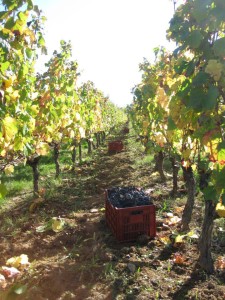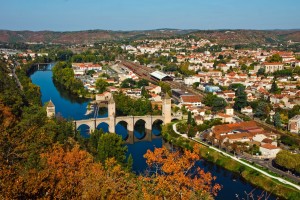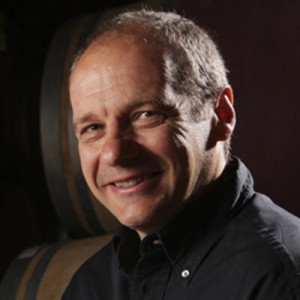Today we have a Conference Preview on a session to be presented by Bertrand Vigouroux, owner of the Georges Vigouroux Company in Cahors. Bertrand’s session is entitled Betting on Malbec: The Different Terroirs of Cahors.
It is astounding that there is so little information to be found on Cahors, the birthplace of Malbec—it’s difficult to find, even on trade websites and in wine literature. This is one of the main reasons why wine professionals flock to the SWE Annual Conference—there is information presented that can only be learned in person and from the winemakers who are actually creating history!
One of those winemakers, Bertrand-Gabriel Vigouroux, is the current generation of a family who has been making wine in Cahors since 1887—first as négociants and, since 1971, as growers. Today, Bertrand and his family own four different properties—each with a distinct terroir—and are finally understanding the innovations that are necessary allow the Malbec to fully express itself.
Cahors is the undisputed birthplace of Malbec with records of Malbec existing in the area since around 50 BC. The wines of this area in the Southwest of France were known worldwide as early as the 13th century—partially due to England’s King Henry II marriage to Eleanor of Aquitaine and partially because the wines of the time were thought superior to that of Bordeaux.
The Malbec-based wines from Cahors had to pass through the port of Bordeaux to be shipped to the major markets of the time, and was often added to the Bordelaise Claret to make it richer. This led to Malbec being planted in Bordeaux, and eventually, to the imposition of heavy taxes on the wines coming from Southwest France—while Bordeaux wines were given preference in shipping. This continued until the end of the French Revolution in 1799.
During the 19th century in France, Château de Haut-Serre, currently owned by the Vigouroux family, was often found alongside First Growth Bordeaux on restaurant menus around France. However, after Phylloxera the growers of Cahors were slower to replant, delayed by an inability to match a favorable rootstock with the Malbec vine. Furthermore, the vineyards of Southwest France were ravaged by the frost of 1956, making producers believe that Cahors might not be the place to make high quality wine.
However, Georges Vigouroux, Bertrand’s father, believed that Malbec still had a future and purchased the original Haut-Serre vineyard, which had gone fallow. The replanting was not an easy task, taking 3 years, and requiring specialized machines to break up and pulverize meter-wide rock, which is typical on what is known as the “slopes” of Cahors.
The next property Georges purchased, in 1983, was the famous and picturesque Château de Mercuès, with its vineyard and castle which sit on an entirely unique terroir. At this property, Bertrand and his father are experimenting with high density plantings and other innovations.
The family continued with the purchase of Château Leret-Monpezat on what is known as the “plateau” of Cahors, characterized by limestone-clay soil. Finally, Bertrand-Gabriel bought their latest vineyard, exploring slightly outside Cahors, on the slopes of Calignac overlooking the Garonne valley.
As we progress as wine professionals, it is our never–ending quest to keep up with the appellations, regions, and regulations as they continuously evolve. In this session, Bertrand-Gabriel Vigouroux will help us understand these divisions of Cahors while tasting his various properties. Cahors is in the middle of a renaissance, and our presenter is one of the pioneers!
Bertrand-Gabriel Vigouroux trained in accounting and management, then enology in Toulouse. At age 23, he joined the family business in control of four separate estates and wineries: Château de Haute-Serre, Château de Mercies, Château Leret-Monpezat, and Château Tournelles.
Bertrand has introduced innovative and quality-centered work methods to the operations, such as high density re-planting, grassing between the vines, leaf thinning, yield control, and in-depth experimentation with oak regimens and fermentations.
Bertrand’s session—Betting on Malbec: The Different Terroirs of Cahors—will be held on Friday, August 12, 2016 at 3:00 pm as part of SWE’s 40th Annual Conference, to be held in Washington, DC.


